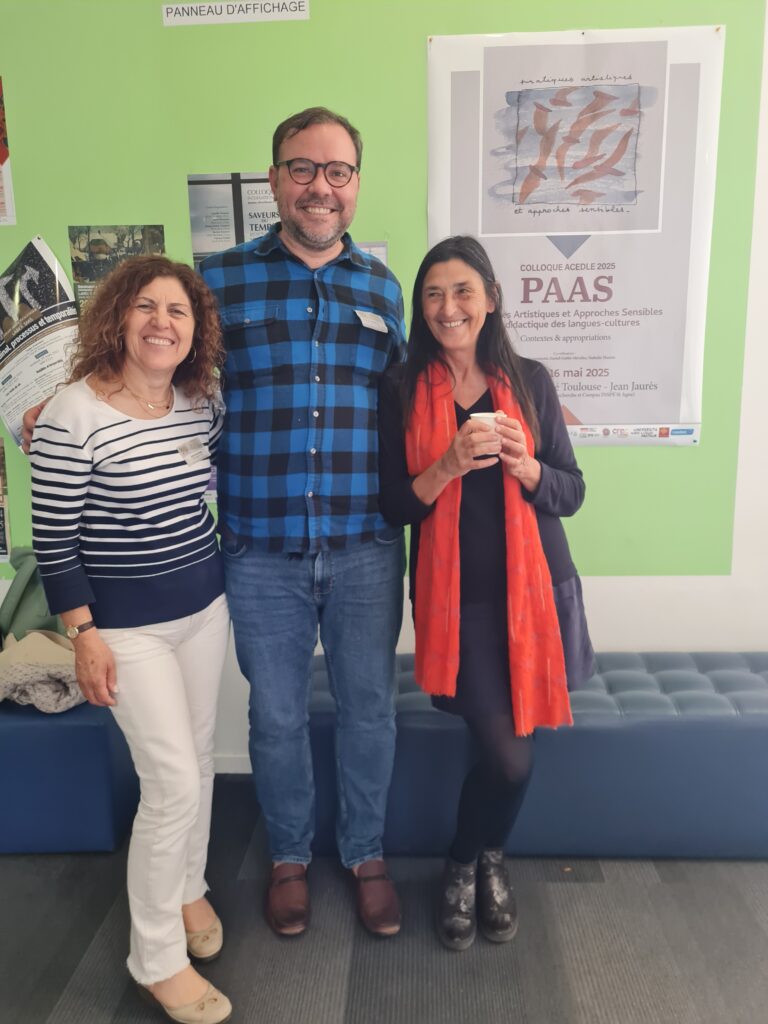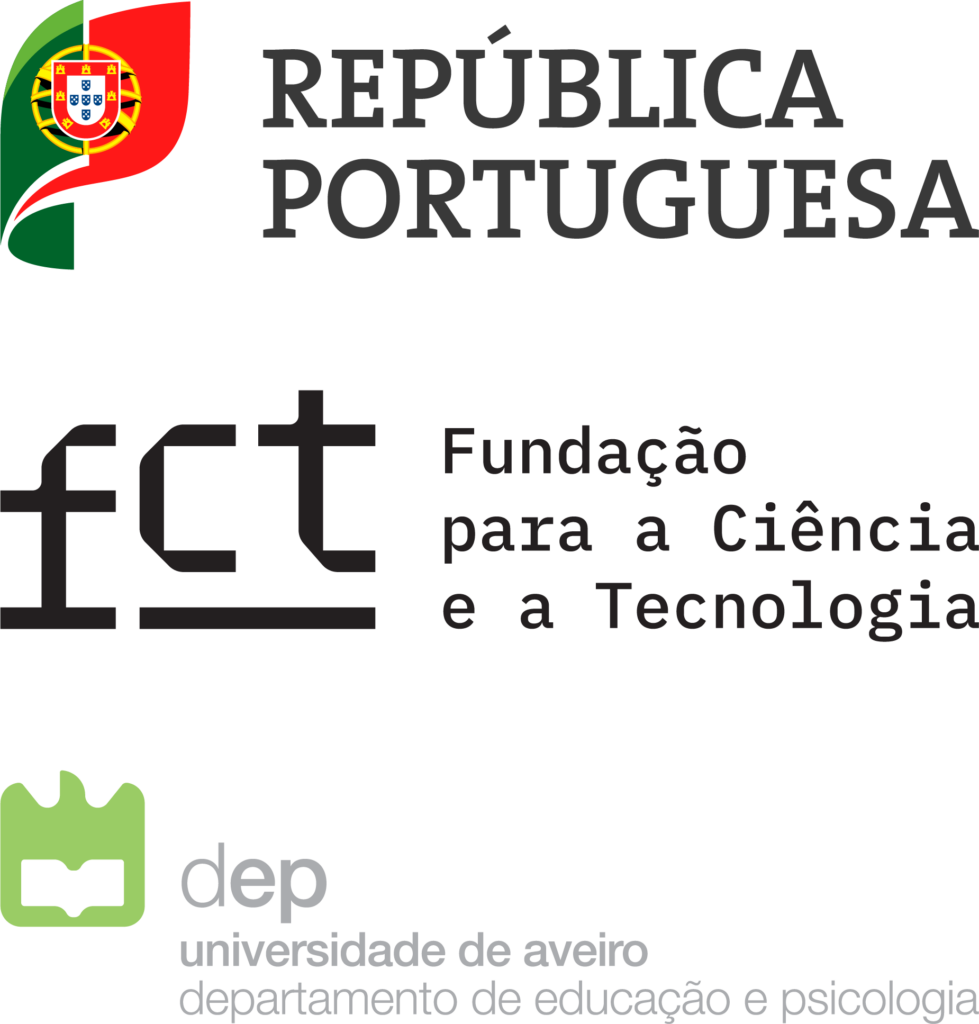Entre os dias 14 e 16 maio de 2025 teve lugar na Université Toulouse Jean Jaurès, em Toulouse, o Colóquio Acedle 2025, “PAAS: Pratiques Artistiques et Approches Sensibles en didactique des langues-cultures – Contextes & appropriations”, que contou com vários contributos de investigadores CIDTFF.
Luis Dantas (CIDTFF, DEP, UA) apresentou o trabalho “Multimodal Pathways through the Linguistic Landscape of the City of Aveiro” no dia 14 de maio, com a participação e orientação de Maria Helena Araújo e Sá (CIDTFF, DEP, UA):
In an increasingly urban world, cities and the artistic expressions that comprise their Linguistic Landscapes (LL) gain relevance as environments of plural identities and cultures. In this context, the study of these landscapes and their pedagogical potential becomes essential. According to Pütz and Mundt (2019), LL encompasses various semiotic modes and includes images, sounds, smells, people, and other elements of the urban landscape, reinforcing the need for “reading” and addressing aspects that go beyond language in increasingly diverse environments.
Our study is interested in the approach to LL from an assemblage-oriented perspective. Pennycook (2024) argues that such semiotic assemblages “allow for an appreciation of the ways in which different trajectories of people, semiotic possibilities, and objects meet at particular moments and places” (p. 15). Moreover, understanding these complex arrangements in the LL of cities involves articulating “pedagogical practices that promote skills to question, interpret, and critique this reality through its multisemiotic elements” (Kress & van Leeuwen, 2021), often permeated by ephemerality. As Shohamy (2019) states, semiotic landscapes are also “inputs for reading the city” and a “mirror of societies.”
This work proposes the use of Linguistic Landscapes (LL) as a pedagogical-didactic tool for the re-signification of these complex spaces, given their multimodal and polysemic nature. We thus explore art in its various manifestations and languages, present in diverse semiotic arrangements.
With this study, we aim to create and experiment with a multimodal educational pathway based on the Linguistic Landscape of the city of Aveiro, to be co-constructed with children aged 10 to 12 years (2nd cycle of basic education in Portugal), as well as to verify the characteristics and learning outcomes arising from the experience of he pathway from a plurilingual and intercultural perspective, with children in the role of “plurilingual social actors” (Coste et al., 2000). In this context, “plurilingualism refers to individuals who are capable or aspire to deploy all the linguistic and other semiotic resources they have available to communicate” (Dendrinos, 2024). This pathway will be articulated around an outdoor educational extension space at the University of Aveiro, designed and conceptualized as an integrated environment for education, training, research, and dissemination.
This research considers the notion of viewing the city and its LL as a multimodal text and its consequent re-signification through “resemiotization” (Iedema, 2001), which involves calling upon the elements of the landscape for other semiotic modes, whether they be drawings, texts, audio, or artistic expressions, and the meanings constructed by individuals from this reinterpretation. This is based on observation, movement, and the direct contact of children with the LL, through experiential approaches proposed by the project, in “chains of encounter” within the urban environment.
Abstract por Luis Dantas, Livret des résumés, pp. 68-70
Rosa Maria Faneca (CIDTFF, DEP, UA) apresentou, no dia 15 de maio, o trabalho “Kamishibaï plurilingue et créativité artistique : une approche didactique innovante du préscolaire au collège”:
Cette communication examine l’utilisation du kamishibaï plurilingue comme dispositif didactique pour favoriser l’apprentissage de la langue de scolarisation et l’expression artistique chez les élèves du primaire au collège. Le kamishibaï, une forme traditionnelle japonaise de théâtre de papier, est réinterprété dans des contextes éducatifs multiculturels et multilingues, offrant des espaces sensibles où les élèves peuvent non seulement apprendre la langue de scolarisation, valoriser leurs langues maternelles et explorer d’autres langues, mais aussi exprimer leur créativité à travers des récits illustrés et les arts visuels.
L’approche sensible, telle que définie par Dompmartin-Normand (2023), est au cœur de cette communication. Elle permet d’allier l’esthétique, l’imaginaire et le plurilinguisme. Le kamishibaï plurilingue mobilise les compétences linguistiques des élèves tout en les invitant à créer et à partager des histoires dans plusieurs langues, y compris leur langue maternelle. Ce dispositif permet non seulement de renforcer les compétences linguistiques, mais aussi d’encourager l’inclusion, l’agentivité et l’émancipation des élèves, en particulier ceux issus de milieux plurilingues ou allophones.
L’étude présentée s’appuie sur des observations dans des classes de primaire et de collège qui ont participé aux six éditions du Concours kamishibaï plurilingue au Portugal, où le kamishibaï plurilingue a été utilisé comme outil d’apprentissage linguistique et d’expression artistique. Les résultats montrent que les élèves ont non seulement amélioré leurs compétences en langue de scolarisation, mais ont aussi développé une meilleure conscience interculturelle et un sentiment d’appartenance à une communauté plurilingue.
En mobilisant des concepts tels que la poïesis linguistique (Huver et Lorilleux, 2018) et l’empouvoirement (Castellotti, 2017), cette communication propose de réfléchir à l’articulation entre l’expérience sensible et l’appropriation linguistique et culturelle. Le kamishibaï plurilingue est présenté comme un outil potentiellement transformateur, capable de créer des espaces où les élèves peuvent explorer leur identité linguistique et culturelle tout en développant leurs compétences langagières, ainsi que leur sensibilité esthétique et artistique.
Enfin, la communication abordera les défis et les opportunités associés à l’intégration du kamishibaï plurilingue dans les pratiques pédagogiques actuelles, en particulier en ce qui concerne la formation des enseignants et la collaboration avec les familles et la communauté. Les implications pour la didactique des langues, ainsi que les perspectives pour de futures recherches, seront également discutées.
Résumé por Rosa Faneca, Livret des résumés, pp. 81-83
As investigadoras do CIDTFF Maria Helena Araújo e Sá, Rosa Faneca e Sílvia Mello-Pfeifer integram ainda a comissão científica do evento.





